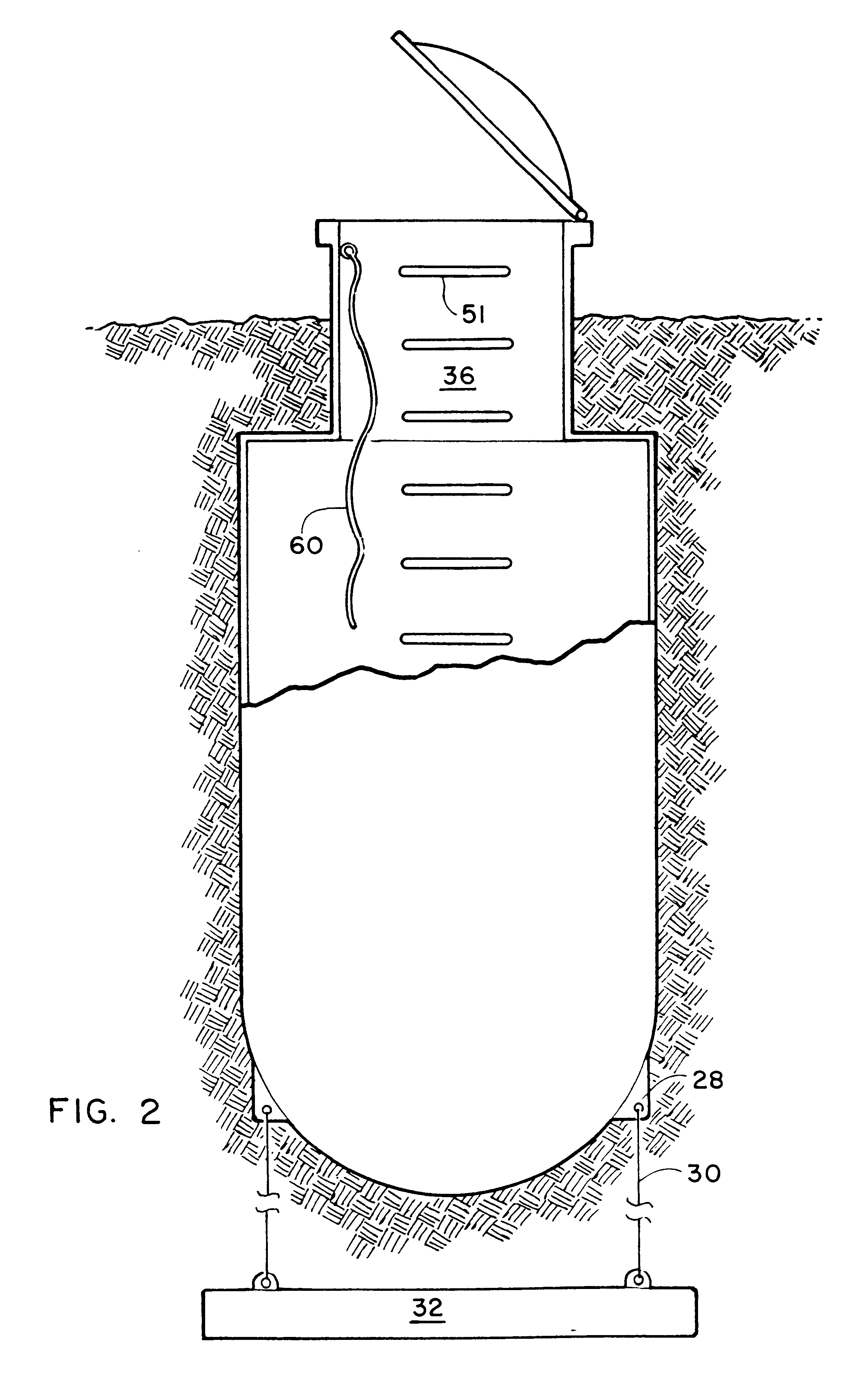Modular storm shelter with emergency breakaway access chute
a module-type, storm cellar technology, applied in the field of modular storm cellars, can solve the problems of affecting the survival of animals, and affecting the survival of humans or animals, and achieving the effects of reducing the risk of life loss
- Summary
- Abstract
- Description
- Claims
- Application Information
AI Technical Summary
Benefits of technology
Problems solved by technology
Method used
Image
Examples
Embodiment Construction
Referring now to the drawing figures, specifically FIGS. 1 through 3 depict preferred embodiments of the storm shelter device 10 herein disclosed and the construction and operation thereof. The disclosed storm shelter device 10 is easily manufactured using conventional fiber reinforced resin or plastic manufacturing techniques. The storm shelter device 10 can be pre manufactured in a number of embodiments to be installed adjacent to a mobile home or conventional housing of wood or other construction.
In the current best mode, the storm shelter device 10 is constructed to feature an elongated cylinder 12 with two hemispherical shaped endcaps 14 located at each of the two ends 16 in a sealed relationship with the cylinder 12 thereby forming an interior cavity 18 inside the cylinder 12. The curved wall surface 20, elongated cylinder 12 and the hemispherical shaped ends 14 provides exceptional strength against exterior pressure from the soil or structures above in the current best mode o...
PUM
 Login to View More
Login to View More Abstract
Description
Claims
Application Information
 Login to View More
Login to View More - R&D
- Intellectual Property
- Life Sciences
- Materials
- Tech Scout
- Unparalleled Data Quality
- Higher Quality Content
- 60% Fewer Hallucinations
Browse by: Latest US Patents, China's latest patents, Technical Efficacy Thesaurus, Application Domain, Technology Topic, Popular Technical Reports.
© 2025 PatSnap. All rights reserved.Legal|Privacy policy|Modern Slavery Act Transparency Statement|Sitemap|About US| Contact US: help@patsnap.com



